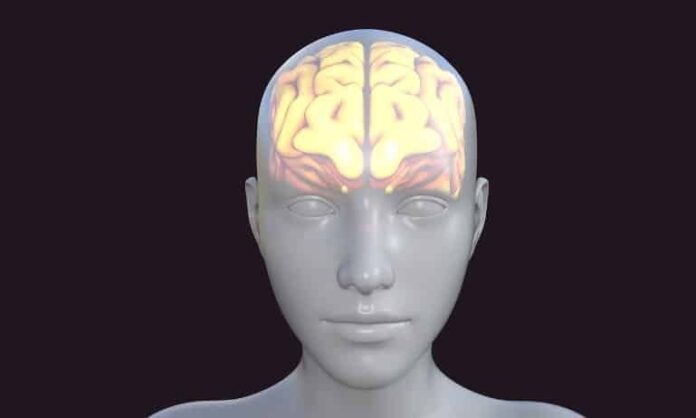[ad_1]
Summary: Treating mouse models of astrocytomas with a new combination therapy resulted in tumor regression in 60% of the mice.
Source: NIH
Gliomas are common brain tumors that comprise about one third of all cancers of the nervous system. In a study funded by the National Institutes of Health (NIH), researchers tested a novel combination treatment approach on mice with tumors with characteristics similar to human astrocytomas–a type of slow-growing glioma–and found tumor regression in 60 percent of the mice treated.
These encouraging results, published in the Journal of Clinical Investigation, could be the first step toward developing a treatment for this type of brain cancer.
Led by senior authors Maria Castro, Ph.D. and Pedro Lowenstein, M.D., Ph.D. along with a team of researchers at the University of Michigan Rogel Cancer Centerb in Ann Arbor specifically tested inhibitors of the compound D-2-Hydroxyglutarate (D-2-HG), which is produced by cancer cells, on a mouse version of astrocytoma carrying mutations in the genes IDH1 and ATRX, along with an inactivated form of the tumor suppressor protein 53 (TP53) gene.
When the implanted mice were treated with a drug to block the production of D-2-HG along with standard of care radiation and temozolomide (chemotherapy) treatments, their survival significantly improved. Looking more closely at tumor cells grown in dishes, the researchers saw that blocking D-2-HG caused the cells to become more susceptible to radiation treatment. However, the treatment also increased the amount of an “immune checkpoint” protein, which tumors use to turn off T cells and evade the immune system.
Inhibiting this immune checkpoint protein with an additional drug resulted in an even greater improvement in survival, because the mouse’s own immune system was able to attack the tumor.

Importantly, this combination therapy also led to immunological memory against the glioma, meaning that the mouse now had T cells tailored to the specific tumor. Because gliomas almost always grow back after treatment, these T cells make the animal better prepared to fend off regrowth.
It must be emphasized that these experiments were performed in mice. Nonetheless the preclinical results produced by this combination therapy could represent a key advance in developing an improved treatment regimen, which combines D-2-HG and immune checkpoint inhibition, radiation, and temozolomide, for patients with astrocytomas.
Funding: This study was supported by the NIH (NS091555, NS094804, NS074387, NS076991, NS082311, NS096756, EB022563); Department of Neurosurgery, University of Michigan; Rogel Comprehensive Cancer Center; Pediatric Brain Tumor Foundation; American Brain Tumor Association; Leah’s Happy Hearts; and Chad Tough Foundations.
About this brain cancer research news
Source: NIH
Contact: Carl P. Wonders – NIH
Image: The image is in the public domain
Original Research: Open access.
“Inhibition of 2-Hydroxyglutarate Elicits Metabolic-reprogramming and Mutant IDH1 Glioma Immunity in Mice” by Kadiyala P. et al. JCI
Abstract
Inhibition of 2-Hydroxyglutarate Elicits Metabolic-reprogramming and Mutant IDH1 Glioma Immunity in Mice
Mutant isocitrate dehydrogenase 1 (IDH1-R132H; mIDH1) is a hallmark of adult gliomas. Lower grade mIDH1 gliomas are classified into 2 molecular subgroups: 1p/19q codeletion/TERT-promoter mutations or inactivating mutations in α-thalassemia/mental retardation syndrome X-linked (ATRX) and TP53. This work focuses on glioma subtypes harboring mIDH1, TP53, and ATRX inactivation. IDH1-R132H is a gain-of-function mutation that converts α-ketoglutarate into 2-hydroxyglutarate (D-2HG). The role of D-2HG within the tumor microenvironment of mIDH1/mATRX/mTP53 gliomas remains unexplored. Inhibition of D-2HG, when used as monotherapy or in combination with radiation and temozolomide (IR/TMZ), led to increased median survival (MS) of mIDH1 glioma–bearing mice. Also, D-2HG inhibition elicited anti–mIDH1 glioma immunological memory. In response to D-2HG inhibition, PD-L1 expression levels on mIDH1-glioma cells increased to similar levels as observed in WT-IDH gliomas. Thus, we combined D-2HG inhibition/IR/TMZ with anti–PDL1 immune checkpoint blockade and observed complete tumor regression in 60% of mIDH1 glioma–bearing mice. This combination strategy reduced T cell exhaustion and favored the generation of memory CD8+ T cells. Our findings demonstrate that metabolic reprogramming elicits anti–mIDH1 glioma immunity, leading to increased MS and immunological memory. Our preclinical data support the testing of IDH-R132H inhibitors in combination with IR/TMZ and anti-PDL1 as targeted therapy for mIDH1/mATRX/mTP53 glioma patients.
[ad_2]
Source link













